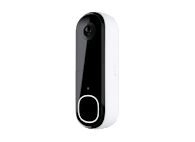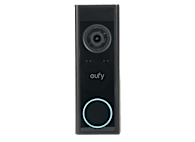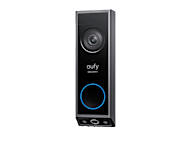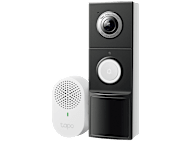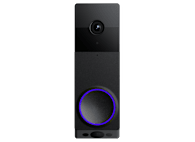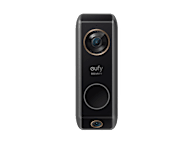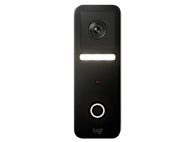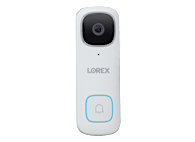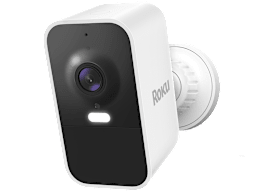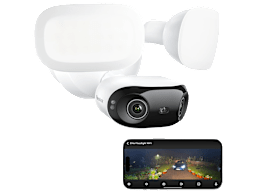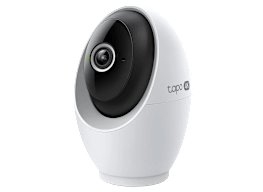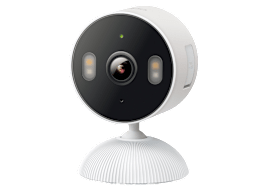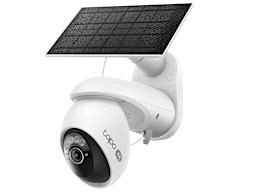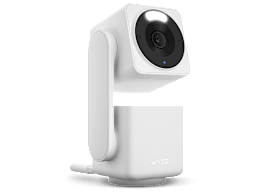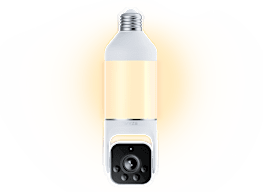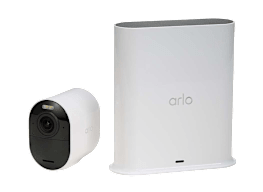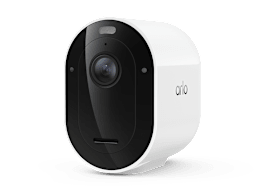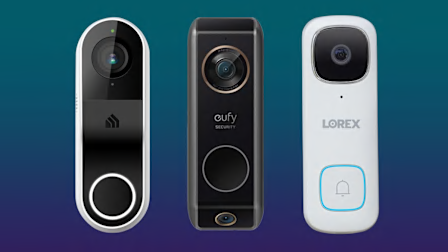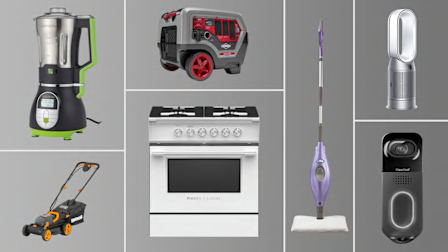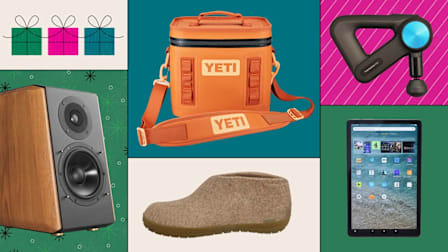10 Best Video Doorbell Cameras of 2025, Lab-Tested and Reviewed
Consumer Reports' tests identify the best models to ward off porch pirates and ding-dong ditchers
When you shop through retailer links on our site, we may earn affiliate commissions. 100% of the fees we collect are used to support our nonprofit mission. Learn more.

Doorbell cameras, also known as video doorbells, let you remotely chat with visitors and keep an eye on package deliveries from the screen of your smartphone. When these doorbells start recording, they immediately send you an alert—though our tests show some do it much faster than others. Some models also offer a package detection feature. Porch pirates, beware.
Below, we’ve rounded up the best doorbell cameras from our tests, in alphabetical order. (CR members can click on the name of each model to access full ratings.) You’ll find doorbells here from Arlo, Eufy, Logitech, Lorex, TP-Link, and Wyze. They all feature night vision, high-definition video, and two-way audio.
As with many connected devices, doorbell cameras can collect potentially sensitive information and potentially even be hacked, which is why CR rates them for data privacy and security.
“Video doorbells provide users with access to video and audio footage over the internet, which presents the possibility for this data to be accessed, stored, shared, bought, sold, and/or stolen,” says Steve Blair, CR’s test engineer for privacy and security.
You might notice that Ring is missing from our list, but that’s because no Ring models break into the very top of our ratings at this time. That doesn’t mean they’re bad products, though. For more information, read our in-depth Ring doorbell review.
5 Best Wireless Video Doorbell Cameras
Here, from our ratings, are the top-performing wireless video doorbells that run off batteries. Some of these doorbells can also be connected to existing low-voltage doorbell wiring for continuous power. For results on more than 20 wireless doorbell cameras, go to our complete video doorbell ratings.
Free video storage: None.
Optional storage plans: Through an Arlo Secure Plus plan, you can get 60 days of cloud video storage for $10 per month for one camera or $20 per month for unlimited cameras. You can add more features, such as in-app emergency response buttons, with Arlo Secure Premium for $30 per month. You can try Arlo Secure free for 30 days.
The Arlo Video Doorbell 2K is one of the company’s newer doorbells. In our tests, it receives top marks for data security and response time, as well as a strong score for video quality. Its two weak spots are its lackluster data privacy and lack of certain smart features if you don’t get a subscription. Its features include geofencing (to turn alerts on or off when you leave or return home), motion alert schedules, and voice/app control via Amazon Alexa and Google Home. With an Arlo Secure subscription, this doorbell also gains cloud video storage and added features like activity zones and smart alerts for people, packages, animals, and vehicles.
This Arlo doorbell has a rechargeable battery, but you can also hardwire it to a home’s doorbell wiring for continuous power and have it ring a home’s existing doorbell chime. A wireless, plug-in chime is also available separately for $50.
For the more affordable HD version of this doorbell, see our test results for the Arlo Video Doorbell HD (AVD3001-100NAS).
Free video storage: Yes, on a microSD card with a capacity of up to 128 gigabytes (sold separately), or on a hard drive with a capacity of up to 16-terabytes with an optional HomeBase S380 hub for $150 (hard drive sold separately).
Optional storage plans: With a Eufy Cloud Storage plan, you can get 30 days of cloud storage that covers one camera for $4 per month or unlimited cameras for $14 per month. You can subscribe to the same plans annually for $40 and $140 per year, respectively.
The Eufy Video Doorbell C31 is a solid, relatively inexpensive battery-powered video doorbell with a 2K resolution camera that has above-par video quality and excellent response times. It also has very good data security, but just so-so data privacy. It only musters a middling rating for smart features in CR’s tests, however, as it’s limited to basic person and motion detection.
The C31 features a quick-release battery that makes it easy to recharge, but you can also hardwire it to your existing doorbell wiring for continuous power. When hardwired, you will also be able to enable 24/7 recording and receive 5-second pre-roll footage from the moment someone approaches or rings the doorbell. The downside to enabling those features is that you’ll have to bypass your home’s existing chime, but you can pair it with Eufy’s add-on chime ($40) if you still need audible alerts throughout your home.
Once visitors ring the bell, you can get smartphone notifications that allow you to jump right into the live feed and greet visitors by voice, or trigger preset responses. The doorbell is compatible with Google Home and Amazon Alexa. You can store recordings entirely locally with a microSD card up to 128 gigabytes, no subscriptions required. The C31 supports Eufy’s Cloud Storage plans for online backups, but you can also get the optional HomeBase S380 add-on that supports up to 16 terabytes of local storage, which is especially nice if you have several Eufy security products.
For a less expensive version of this doorbell that is only battery-powered and can’t be hardwired, see our test results for the Eufy Video Doorbell C30.
Free video storage: Yes, using 8 gigabytes of built-in memory. (Eufy estimates it will store up to 90 days of motion-triggered video clips.)
Optional storage plans: Through a Eufy Cloud Backup plan, you get 30 days of cloud storage for one camera for $4 per month (or $40 per year) or 30 days for all cameras at the same location for $14 per month (or $140 per year).
Eufy’s newest dual-camera doorbell, the Eufy Video Doorbell E340 is a great performer in CR’s tests. It offers speedy response times for alerts and loading live feeds, and it earns a strong score for data security. It also receives midlevel scores for video quality and data privacy. In addition to its two cameras (one aimed out at visitors, the other aimed down at packages), this doorbell packs a ton of features: color night vision (thanks to built-in spotlights), person detection, package detection, facial recognition, activity zones, and voice and app control via Amazon Alexa and Google Home.
This doorbell can run off its removable, rechargeable battery pack or be connected to low-voltage doorbell wiring for power. When hardwired, it can also ring existing doorbell chimes. It features 8 gigabytes of memory to store video locally, and Eufy also offers cloud video storage subscriptions as an alternative.
Free video storage: Yes, on a microSD card with a capacity of up to 512 gigabytes (sold separately).
Optional storage plans: Through a Tapo Care Premium plan, you get 30 days of cloud video storage, starting at $3.49 per month (or $35 per year) for one camera and going up to $12 per month (or $120 per year) for 10 cameras.
The TP-Link Tapo TD25 is a Best Buy-exclusive version of the TP-Link Tapo D225, featuring a slightly higher-resolution camera sensor (5 megapixels vs. the D225’s 4 megapixels). It receives excellent scores for its quick response times for motion alerts and doorbell presses, and its robust set of smart features that are included without the need for a subscription. It also receives a very good score for data security and decent scores for video quality and data privacy. Its features include a 180-degree field of view for head-to-toe video, AI object recognition (for people, packages, and vehicles), a built-in spotlight for color night vision, activity zones, and compatibility with Amazon Alexa and Google Home.
You can use a microSD card (up to 512 gigabytes) for local storage, or upgrade to Tapo Care Premium to store clips in the cloud for up to 30 days. The TD25 has a built-in rechargeable battery, but it can also be hardwired to doorbell wiring for continuous power and to enable 24/7 recording and four-second pre-roll video (this shows you what happens before the doorbell detects motion). Depending on how you hardwire the doorbell, it can ring an existing doorbell chime, but you won’t be able to use the 24/7 recording feature. Your best solution is to use the plug-in chime that comes with the doorbell instead.
For a more affordable alternative with similar performance in our lab tests, consider the TP-Link Tapo D225. And if you don’t plan to hardwire your doorbell, you can save even more with the TP-Link Tapo D210.
Free video storage: Yes, on a microSD card with a capacity of up to 256 gigabytes (sold separately).
Optional storage plans: Through a Wyze Cam Plus subscription, you get 14 days of cloud storage with advanced detection alerts for one camera for $3 per month. With Wyze Cam Unlimited, you’ll get the Cam Plus features for all cameras at one location, facial recognition, remote arming/disarming features, and a multi-cam timeline for $10 per month. Wyze Cam Unlimited Pro includes AI descriptive alerts, AI-powered video history search, 60 days of storage for recorded events, and 24/7 emergency dispatch service for $20 per month.
The Wyze Duo Cam Video Doorbell gets its name from its two-camera design. It has one 2K-equivalent main camera with color night vision to see visitors, while a second bottom-mounted camera helps you scout your porch for packages. Despite the extra hardware, it only manages to nab a middling score for video quality in our tests, though its response time is outstanding.
That said, we found its smart features subpar. By default, you’ll get motion detection with automatic voice alerts (in addition to a two-way intercom) to inform visitors they’re being recorded. But you’ll need a Wyze Cam Plus subscription to unlock smart alerts for people, pets, packages, and vehicles. Like many other doorbell cameras, it works with Amazon Alexa and Google Home.
You can mount the Duo Cam nearly anywhere you want thanks to its quick-release battery, which lasts anywhere from 3 to 6 months, according to Wyze. The doorbell comes with a plug-in WiFi chime, but you will need to purchase the Wyze Chime Controller, $18, if you want the doorbell to ring your home’s existing chime. Hardwiring the doorbell to your existing wiring enables continuous 24/7 recording with a few seconds of pre-roll footage. You can store footage locally on a microSD card (not included) or keep events backed up to the cloud with a Wyze Cam subscription.
5 Best Wired Video Doorbell Cameras
Here are the top-performing wired doorbell cameras from our ratings. These doorbells have to be hardwired to low-voltage doorbell wiring for power, but they’re much smaller and slimmer (and, as a result, stand out less on your doorframe) than their battery-powered brethren. For results on more than 20 other wired doorbell cameras, go to our complete video doorbell ratings.
Free video storage: Yes, using 8 gigabytes of built-in memory. (Eufy estimates it will store up to 90 days of motion-triggered video clips.)
Optional storage plans: Through a Eufy Cloud Backup plan, you get 30 days of cloud storage for one camera for $4 per month (or $40 per year) or 30 days for up to 10 cameras for $14 per month (or $140 per year).
The Eufy Video Doorbell (Wired) S330, previously called the Eufy Video Doorbell 2K Dual (Wired), is one of a few video doorbells with two cameras, one pointed straight out to spot visitors (or intruders) and one pointed down to keep an eye on package deliveries. In our lab tests, it receives strong scores for video quality, data security, and response time for alerts and loading live feeds. It offers a decent amount of smart features and its data privacy is midlevel, which is actually better than many competing doorbells.
In addition to its two cameras, this Eufy features high dynamic range (HDR) for more vivid video; voice and app control via Amazon Alexa and Google Home/Assistant; activity zones; three-second video previews (to show what happened before the camera detected motion); facial recognition; person detection; and package detection. Notably, the last three features don’t require a subscription, which is common for other doorbells.
This Eufy doorbell features 8 gigabytes of built-in memory to store footage, but the company also offers cloud video storage subscriptions. As its name suggests, this Eufy doorbell requires low-voltage doorbell wiring for power, but it can’t ring your home’s existing chime. Instead, it comes with a wireless, plug-in chime in the box.
If you’re interested in this doorbell but need a battery-powered model, check out the Eufy Video Doorbell S330. It does well overall in our tests, but its video quality and response time aren’t as good when compared with the wired version.
Free video storage: None.
Optional storage plans: Requires an Apple iCloud+ plan for 10 days of storage for one camera at $1 per month, for up to five cameras at $3 per month, or for unlimited cameras at $10 per month.
The Logitech Circle View Doorbell is unusual in that it works only with a special feature of the Apple Home (formerly HomeKit) smart home system called HomeKit Secure Video. Through this software, it uses end-to-end encryption to keep your video secure. As a result of this tight-knit integration, the Logitech doorbell works only with iPhones (sorry, Android users), stores your videos only in Apple iCloud (if you pay for a storage plan), and requires an Apple home hub (either a HomePod smart speaker or an Apple TV streaming box) to process motion alerts for people, animals, and vehicles. In fact, there’s no Logitech app for the doorbell; instead, it uses the Apple Home app.
But if you’re a big fan of Apple products, this doorbell will work quite well for you. In our tests, it receives a strong score for video quality and excellent scores for data security and response time for alerts and loading live feeds. It receives a decent score for its included smart features, but its data privacy isn’t very good. Its other features include activity zones, facial recognition, and a night light for color night vision.
For 10 days of cloud video storage for one camera, you’ll need to subscribe to a 50-gigabyte iCloud+ storage plan at $1 per month. For up to five cameras, you’ll need a 200-gigabyte iCloud+ plan at $3 per month. For an unlimited number of cameras, you’ll need a 2-terabyte iCloud+ plan at $10 per month. The Logitech Circle View Doorbell requires low-voltage doorbell wiring for power and can ring your home’s existing doorbell chime.
Free video storage: Yes, using the included 32-gigabyte microSD card, expandable up to 256 gigabytes.
Optional storage plans: Through a Lorex Cloud Storage Plan, you can get 30 days of cloud video storage for one camera for $3 per month (or $30 per year) or 30 days of storage for up to 10 cameras at one location for $10 per month (or $100 per year).
The Lorex 2K QHD B451AJD-E WiFi Video Doorbell receives very good scores for video quality and data security, and decent scores for response time, data privacy, and its included smart features. Those features include person detection, color night vision, high dynamic range video, recorded messages for when you can’t answer the doorbell, activity zones, and compatibility with Amazon Alexa and Google Home. This Lorex model stores footage locally on a 32GB microSD card that comes with the doorbell. If you want to store even more footage, the doorbell accepts up to a 256-gigabyte microSD card and also supports Lorex’s cloud storage plan. This Lorex doorbell requires low-voltage doorbell wiring for power and can ring your home’s existing doorbell chime.
Free video storage: Yes, on a microSD card with a capacity of up to 256 gigabytes (sold separately).
Optional storage plans: Through a Kasa Care plan, you get 30 days of cloud storage for one camera for $3 per month or $30 per year, or 30 days of storage for up to 10 cameras for $10 per month or $100 per year.
The TP-Link Kasa Smart KD110 is a great doorbell camera for the money, with a very good rating for data security, fast response times, decent video quality, and a good number of smart features. Its only noticeable flaw is its lackluster data privacy, but that’s not uncommon for this product category. This TP-Link model features activity zones, voice and app control via Amazon Alexa and Google Home, person detection, and local video storage using a microSD card (sold separately). It requires low-voltage doorbell wiring for power, but it can’t ring your home’s existing chime. Instead, it comes with a wireless plug-in chime in the box.
Free video storage: Yes, on a microSD card with a capacity of up to 512 gigabytes (sold separately).
Optional storage plans: Through a Tapo Care Premium plan, you get 30 days of cloud video storage, starting at $3.49 per month (or $35 per year) for one camera and going up to $12 per month (or $120 per year) for 10 cameras.
One of the smallest (and least expensive!) doorbell cameras you can buy, the TP-Link Tapo D130 offers a bunch of features without a subscription. They include 24/7 recording with local video storage on a microSD card, AI object recognition (for people, vehicles, packages, and pets), activity zones, and color night vision. In our tests, it receives strong scores across the board, with high scores for response time and its many included smart features. Its only weak spot is data privacy, but that’s common among doorbell cameras. This TP-Link model requires low-voltage doorbell wiring for power, but it can’t ring your home’s existing doorbell chime. Instead, it comes with a wireless plug-in chime in the box.
How Consumer Reports Tests Video Doorbell Cameras
Our test engineers put doorbell cameras through several tests. Among other characteristics, the tests reveal how quickly a video doorbell sends alerts to your smartphone when it detects motion, how long the doorbell takes to load a live video feed of the visitor in its smartphone app, video quality under daylight and nighttime lighting conditions, and smart features (such as person detection and voice control via digital assistants). We also evaluate 70 factors related to each product’s privacy practices and data security.
Last year, we updated our testing methodology to reflect changes in the technology.
Since we started testing doorbell cameras in 2017, they have gotten faster at loading videos and live feeds, so we’ve adjusted our response time test to reflect those improvements and push manufacturers to do even better. We no longer factor smart features that require a subscription into our smart features score. We also now place greater emphasis on our data security and response time tests to help you avoid purchasing a video doorbell that is slower or more susceptible to security problems than its competitors.
For more information on our doorbell camera testing process, see our home security camera buying guide.

















